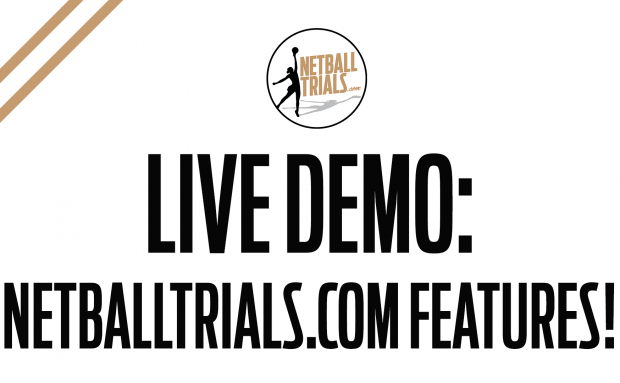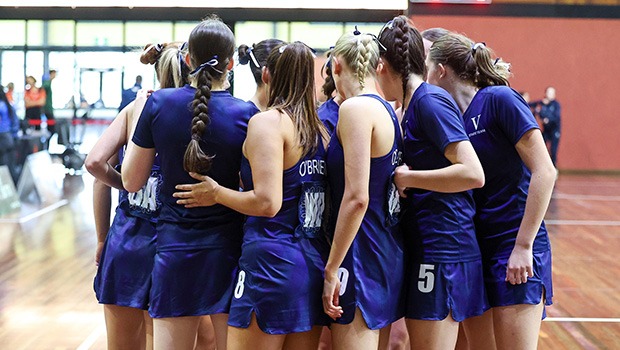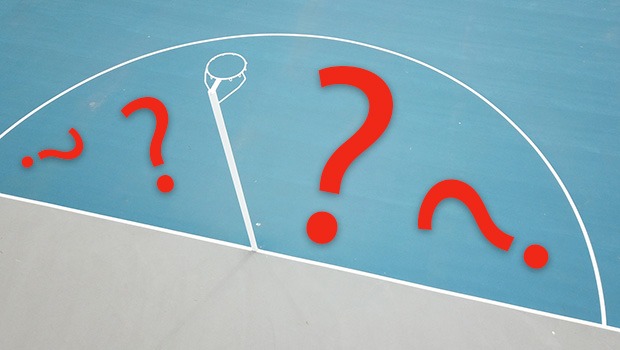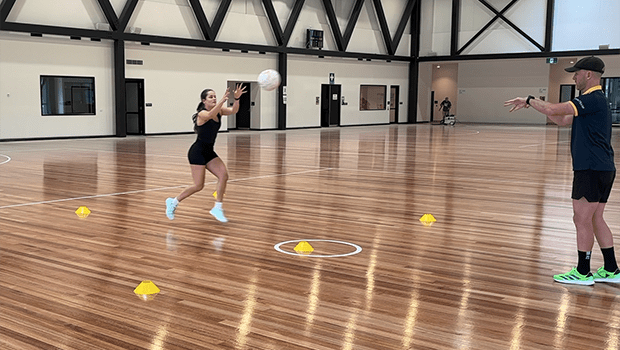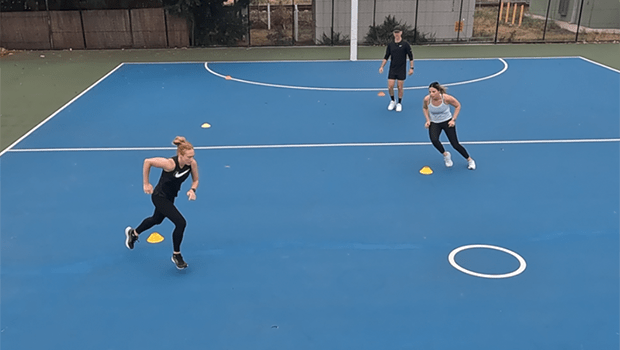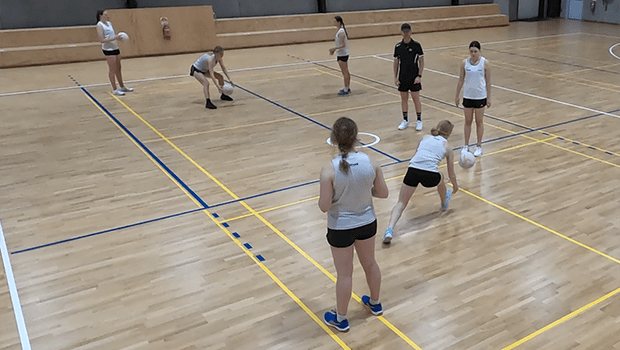It’s the start of the season for most netball teams and, if you haven’t done it already, you may be considering putting your players through some fitness testing, to establish where they’re at after the Christmas break.
So what should fitness testing for netballers include?
FIT AND FIRING: CHECK OUT ALL OF OUR FITNESS DRILLS HERE
Victorian Netball League strength and conditioning coach Scott Graham shares his advice for a simple fitness testing program.
THE BASIC COMPONENTS
Graham performs a number of key tests as part of his fitness testing, many of which can be easily replicated as part of your own club’s testing. They include:
- ‘Yo-yo Test’
- 5m and 10m sprint
- 5-0-5 agility test
- Single-leg bound (measuring the distance jumped)
- Single-leg triple bound (leap three times consecutively on the one leg, measuring distance jumped)
- Vertical leap (double-leg + each single leg)
- Knee-to-wall test for ankle flexibility
The sprint and agility tests can be performed with a stopwatch, however it’s likely you’ll experience some inaccuracy, so it’s advisable to use electronic timing gates, if available.
Some testers may use a Vertec or other jump measuring equipment for the vertical leap, however putting some chalk on an athlete’s hand and having them jump and touch a wall can suffice.
Graham says it’s important to test both legs individually where possible, as it can provide an indication of the risk of an athlete picking up an injury.
“The literature has demonstrated that if you have a greater than 10% difference between sides, you’re more likely to be injured on either side, because one side is overworked/one side is weaker,” he says.
Those fitness testing results can then be used to tailor a strength program to improve and ‘even up’ a player’s strength on both sides of their body, to avoid those injuries.
Players always ask what a ‘good’ result is for a fitness test, which is a tough question to answer as results are very individual and a great result for one player might be a so-so result for another player, based on their position, natural athleticism and previous results. It’s also important to remember that testing results only tell part of the story – there are a lot of great players who test very poorly but know their way around a netball court!
But for your interest, when it comes to netball’s elite:
- For the ‘Yo-yo’ test, elite Suncorp Super Netball midcourters are pushing up to level 18 and above.
- Vertical leap (double-leg) you’ll see elite players up above 60cm.
- For a 10m sprint, the fastest players we recorded at state league testing this year were just above 1.9 seconds.
FORGET THE BEEP TEST … THE YO-YO’s THE GO
You may have done or seen a ‘beep test’ at some stage throughout your playing or coaching days. For the uninitiated, the ‘beep test’ is a fitness test in which players shuttle 20m back and forth to a series of beeps that steadily increase in speed, until each player can no longer keep up with the beeps.
But the ‘beep test’ has now been superseded in the netball world because it isn’t considered sport-specific enough, as it doesn’t allow for short periods of rest like players receive in an netball game.
Enter the ‘Yo-yo Test’.
NEED NETBALL DRILLS: REGISTER NOW FOR MORE THAN 400 VIDEOS!
The ‘Yo-yo’ also uses beeps that players must keep pace with, and they also gradually increase in speed. But in the ‘Yo-yo’ there’s also a 10-second rest after each 20m up-and-back sprint, and the beeps increase in speed far more quickly than in the ‘beep test’.
It’s worth noting that there are two versions of the ‘Yo-yo’: Intermittent Recovery (IR) 1 and 2. For netball, it’s the IR1 you’ll want to use.
See how the test works in the video below, and download your own copy here.
Graham says the ‘Yo-yo Test’ is now considered the gold standard field test for netball fitness testing, as it provides the most accurate reflection of each player’s fitness as it translates to the netball court, and allows him to set their individual fitness programs accordingly.
“The IR1 pretty much predicts bang-on the speed at which they’ll drop out in a Vo2 max test,” he says.
“So from that speed that they drop out on, I then design their intermittent endurance running programs around that.”
The change of direction in the ‘Yo-yo’ is also huge in terms of separating out strong athletes from other athletes, Graham says, as stronger athletes are able to slow down later and take off faster at the 20m turnaround.
KEEPING PLAYERS ON COURT
Graham stresses that while gaining an understanding of each player’s fitness is important in terms of monitoring their fitness levels, for him it’s more about knowing where they need to improve their body in order to minimise the risk of injury.
In the end it’s all about keeping your team on court and performing at its best level for as long as possible, and nothing kills that quicker than having a couple of players out injured.
“The number one thing that correlates to team success is player availability. If not the top, then definitely the top three,” Graham says.
“It’s about keeping them on the court, which is a strength and conditioning coach’s first, second and third priority.”
Scott Graham is an elite strength and conditioning coach who is currently working with Geelong Cougars in the Victorian Netball League, and previously worked with Super Netball side Magpies Netball, as well as the Tasmanian Magpies and Victorian Fury in the ANL.
